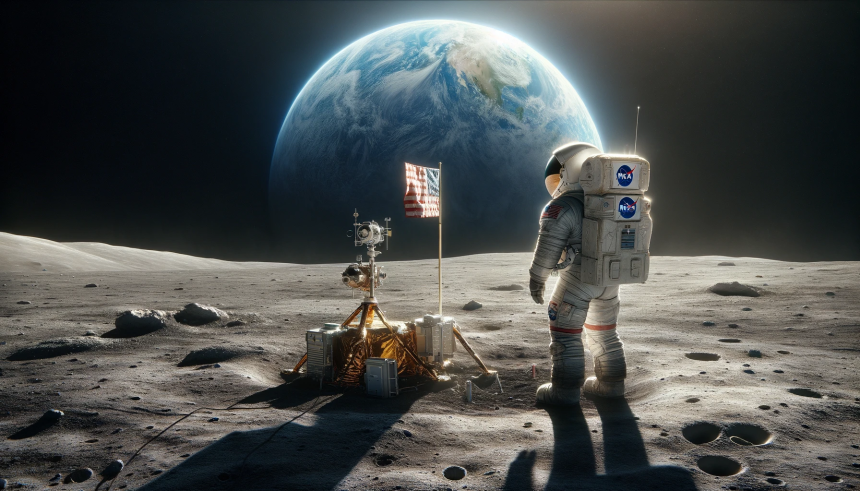NASA’s 2024 Human Lander Challenge (HuLC) Forum gathered 12 university teams in Huntsville, Alabama, close to the Marshall Space Flight Center, showcasing innovative solutions to lunar dust management. This forum marks a significant step towards solving one of the major challenges faced by NASA’s Artemis mission, which aims to establish a sustained human presence on the Moon. The selected finalists presented their projects to NASA and industry experts from the Human Landing Systems Program from June 25-27.
Innovative Lunar Dust Management Solutions
As part of the Artemis lunar exploration campaign, NASA is focused on sending the first woman, first person of color, and first international partner astronaut to the Moon. A critical aspect of this mission involves addressing the issue of dust mitigation during landings, particularly in the lunar South Pole region. Teams participating in the 2024 Human Lander Challenge proposed systems-level solutions to manage or prevent the formation of lunar dust clouds, known as lunar plume surface interaction, during spacecraft landings.
Recognition of Innovative Projects
The University of Michigan emerged as the overall winner with their project “ARC-LIGHT: Algorithm for Robust Characterization of Lunar Surface Imaging for Ground Hazards and Trajectory,” receiving a $10,000 award. Following closely, the University of Illinois, Urbana-Champaign secured second place and a $5,000 award with their project “HINDER: Holistic Integration of Navigational Dynamics for Erosion Reduction.” The University of Colorado Boulder took third place with their “Lunar Surface Assessment Tool (LSAT)” project, earning a $3,000 award.
Special Acknowledgments
In addition to the main awards, Texas A&M University and Embry-Riddle Aeronautical University, Prescott were recognized for excellence in systems engineering with their projects “Synthetic Orbital Landing Area for Crater Elimination (SOLACE)” and “Plume Additive for Reducing Surface Ejecta and Cratering (PARSEC),” respectively. These awards highlight the innovative approaches taken by the teams to tackle the issue of lunar dust management.
Comparing past information, the University of Michigan has shown consistent innovation in aerospace technology, previously winning accolades for their contributions. The emphasis on lunar dust management reflects a continued priority in NASA’s lunar exploration strategy, with previous reports focusing on the challenges posed by lunar regolith and its impact on equipment and human health.
The significance of managing lunar dust has been a recurring theme in NASA’s lunar missions, underscoring the importance of sustainable solutions for long-term lunar habitation. The Human Lander Challenge represents a collaborative effort between academia and industry to address these challenges, building on past initiatives aimed at improving lunar surface operations.
NASA’s Human Lander Challenge serves as a platform for fostering innovation and collaboration within the academic and commercial sectors. Students and faculty advisors involved in the challenge had the unique opportunity to engage with NASA and industry experts, gaining valuable insights into the complexities of human space exploration. This initiative underscores NASA’s commitment to nurturing the next generation of space explorers and advancing technologies crucial for future lunar missions.










